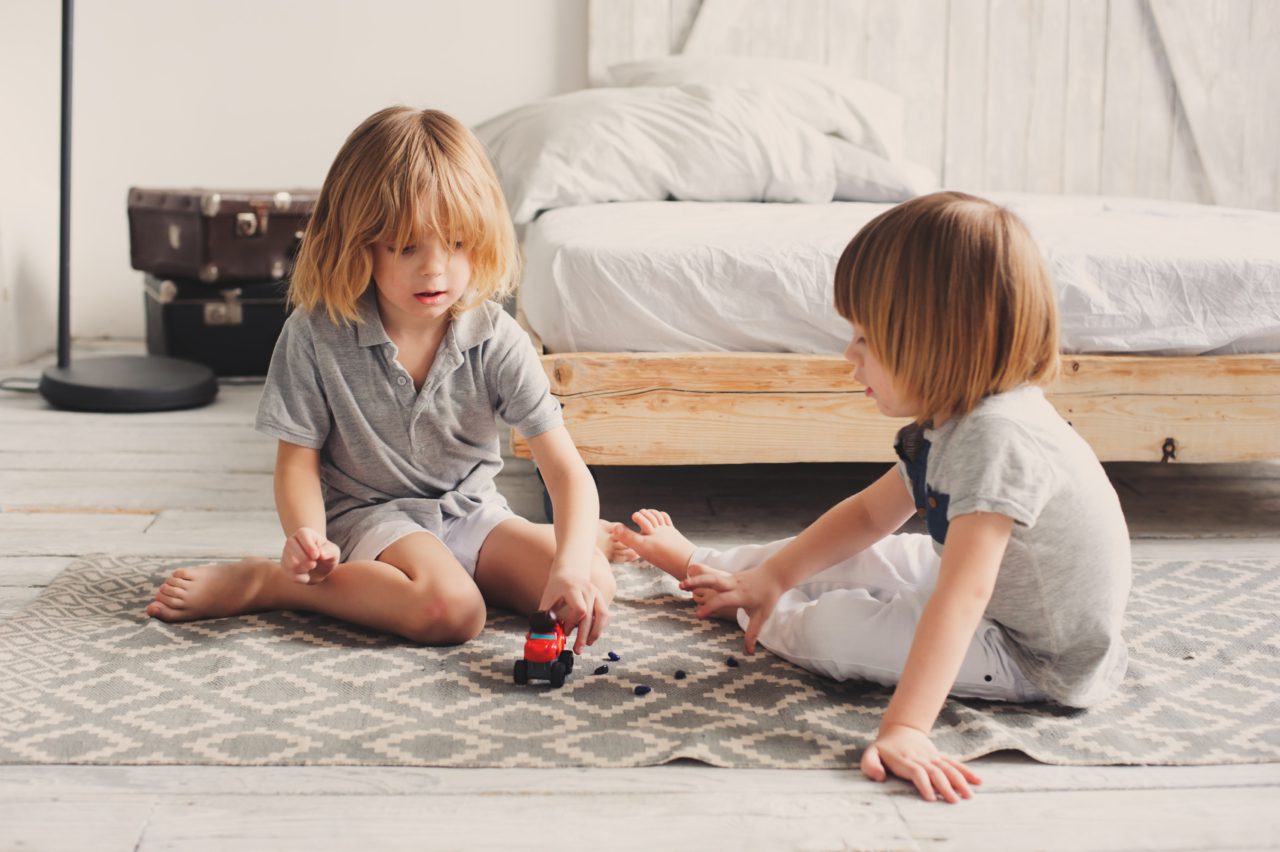Many parents and caregivers of preschoolers have had that moment where a child is bored but every suggestion is a no. Or, the child wants to draw with crayons…but only with them, not alone. Sometimes this whole idea of “independent play” seems like it’s a myth.
Here are some independent play strategies to try:
- Put the light-up-singing-buzzing toys away. The best choices for independent play are ones that children can explore in a lot of different ways. Think of plastic food-storage containers, blocks and figurines, or a pile of cardboard boxes of different sizes. More ideas: art materials, playing-house props, dolls/stuffed animals, balls and baskets, toy vehicles, etc.
- Make sure the toys are right for your child’s age and stage. If they’re too challenging, your child will need lots of help. (A little challenge is okay.) And focus on quality over quantity. Too many toys can be overwhelming and actually reduce a child’s attention span during play.
- Create a child-safe play space. It’s not fun to play when there are lots of rules.
- If possible, remove screens like phone and tablets from the play area. Keep all screens powered down during playtime (unless, of course, you are working on one!).
- Manage your own expectations. By age two, a toddler’s attention span is about 5-6 minutes. Three-year-olds can pay attention for up to 8 minutes and four-year-olds for up to about 10 minutes. If your preschooler is new to independent play, begin with 5 minutes and extend as they get used to it.
- Start with time together before moving to independence. Begin with 15-20 minutes of playtime with your child. Silence your phone and really let your child enjoy your full attention. Then…
- Stay upbeat and let your child know what’s next: “Okay, now it’s your playtime. Have fun! You can tell me all about it when you’re done. I’ll be sitting at my desk/folding laundry/reading my book while you play.” If your child is most comfortable with a lot of structure, you can tell them, “I’ve set the timer for your ten-minute play time.” Other children prefer to play without knowing the alarm will go off. The most important guidance here is staying positive. Playtime should just be part of the daily routine, a chance for fun. Avoid framing it as a chore, as in: “I really need to work now and you have to go play by yourself.”
- Stay close by—within eye/earshot. Move on to your own activity. Children learn and play best when they feel safe and secure, and that’s what your presence offers. When children can glance up and check in, it allows them to focus their energy on play.
- Avoid commenting on your child’s play. Wow, that’s a long line of blocks. You did a great job of stacking! Comments like these are well-intentioned, but shift a child’s focus away from what they’re doing. Imagine being in the middle of an activity you really love: Do you enjoy interruptions? Let your child be fully engaged and get into the flow of their activities.
- Finally, make independent play part of your child’s daily routine, morning and afternoon. While this will feel new for children when you begin, eventually (like all routines), it will become familiar – part of the rhythm of their lives.

Over time, keep play time fresh by swapping out toys so that when they return, they feel “new.” Consider creating a special basket of high-interest toys or materials that only come out during independent play. Or, try leaving interesting items out for your child to “discover” during play. You might line up some interesting shells on the floor. Or fill an empty egg carton or onion bag (those red mesh things) with toilet paper tubes or pinecones and place it in your child’s play space. The idea is that these curious items are an invitation to explore and spark a child’s interest.
Last, there’s no need to rush in with ideas if kids get “bored.” Boredom is the bridge to creativity, imagination, and new ways to play. It’s tempting (for all of us!) to turn to screens for entertainment at the first sign of boredom. But learning to push through boredom is a critical life skill that builds resilience, persistence, and creativity. Let your child know you trust them: “I wonder what you’ll come up with to play next. I know you’ll discover something fun.”
The resource above is adapted from a blog that first appeared on PBS.org/parents




